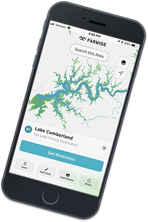
Simon sat crouched on the mound waiting for the sun to appear. The crisp November morning was too cold and frosty for most people to go hunting. It was dark when he had found his way to the mound near the feeding grounds of whitetail deer. Having heard about the rich harvests and trophy kills specific to the region, the hunter in him was eager to shoot.
It seemed like a long wait before a small movement caught the corner of his eye. Adrenalin rushed in his veins. A grey shape came out of the tree line and meandered slowly to the water body ahead, stopping here and there for small feeds. The doe was about 2.5 years old as spotted through his binoculars – the perfect target in the post-rut season.
The challenge lay in beating the wind that was moving in its direction. He waited for the whitetail to stop, straightened his 7×57 and took aim. There was a loud sound that broke the serenity of the deer habitat. Had the bullet found its aim? There was suspense in the air. It added to the thrill.
What followed called for a celebration with fresh venison on the table. It was an exciting day spent outdoors and the food was much more satiating than the meat ordered online from the local grocery! No wonder Simon preferred to go hunting whenever he could.
Sounds familiar? Here, we have put together what it takes to go out in the wild to make ethical kills. Read on to understand how to enjoy the experience of hunting – whether or not you are a first-timer.
Train Well At The Range
Outdoor Expert Steve West hugely emphasizes the importance of range practice before actually hitting the field. In the video above, he shares a few personal tips to shoot from different positions. Practicing them beforehand at the range gives you a better sense of what to expect when you actually Go Hunting.
Spend time in Basic Planning
To get started, you may want to figure out the answers to the following:
- What do you want to hunt and where?
- What gun and ammo will be needed?
- What is the right gear?
- How will you shoot accurately in different situations?
- Do you know how to skin the animal, quarter and process it?
- What about the licenses and tags?
- What is the best way to clean your guns?
There will be several other questions specific to the type of animal, habitat, weather conditions, etc. when you decide to go hunting alone or in a group. It’s best to get valuable information from professional hunters and experts with field experience.
Pre-season Preparation Tactics
You may want to start gearing up soon after you win the big game tag or get the over-the-counter (OTC) permit.
- Understand the quota. How many hunters will be around in the area? Have you opted for a controlled or special hunt? Remember, more hunters means higher on-field uncertainty.
- Research on the terrains, off roads, productive areas, mounts and hills, timber lines and the areas you need to avoid. Tech-savvy hunters use Google Earth and ArcGIS to plan their course. The old-school ones prefer the 1:24,000 and 1:100,000 USGS maps – take your pick. Farwide provides web maps to pre scout your hunting location while still at home. Explore them here.
- An in-depth study of aerial imagery will give you an idea of the trees, brushes, natural hideouts and forage to choose from. Look for property boundaries, trails, unit boundaries, and other relevant features before you go hunting; save 3-D images and pre-empt your cover, water sources, hides, and quarry location beforehand. Farwide App allows you to download data and save it for offline use. It even allows you to share the data with your fellow hunters.
Download the Free Farwide App to access all outdoor relevant information easily
Will you hike to find the antelope, elk, whitetail deer or the big hunt you are after? Pre-planning is the key to success in wild terrains. That’s why pros spend days strategizing their tracks and trails, ammo and gear, and how they would want to kill and carry their quarry.
Things to Carry
Here’s a list of essentials that you cannot leave behind:
- Camouflaged- fabric hunting day pack with a gun/bow carry system for supporting your gear. It should be lightweight and spacious.
- Binoculars to increase your field view and vision control
- Riflescope to identify the target from a safe distance and amplify shooting accuracy
- A good quality, camo-colored face mask to keep you comfortable and focused
- Lightweight safety harness to keep you secure while using a treestand
- Quick-drying travel towel that works as a sweat towel
- Hunting knife with excellent grip for removing animal hide, cutting ropes
- LED flashlight for setting up camp and moving about in the dark
- A waterproof trail camera with night vision.
You will also need a scent killer, lens cleaner, rangefinder, portable charger, odorless bug spray, survival shelter, field wipes – the list goes on. We can help you chalk out the complete list of what to carry, and not, at Farwide.com.
Hunting in the wild – be it on private or public lands – requires deep insights and preparations. Get going with expert tips and guidelines at Farwide.com to learn everything you need to before you Go Hunting.














10093 Comments
Leave Comment
Cancel Reply